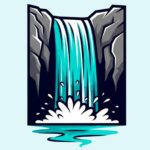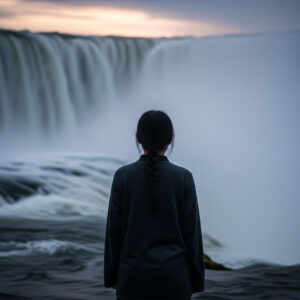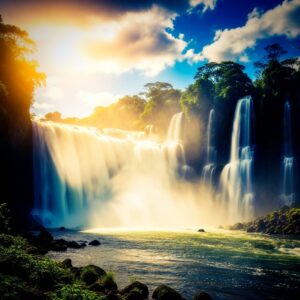Nature’s Therapy: How Waterfalls Can Boost Your Mental Well-being
Your brain feels like a browser with too many tabs open. The constant buzz of notifications, the endless to...
Read MoreWhat a Waterfall Taught Me About Being Alive
The first time I stood in front of a waterfall, I wasn’t prepared. I thought I was there for the...
Read MoreWhat Actually Makes Good Waterfalls? Here’s What We’re Really Looking For
Let’s be honest There’s just something about waterfalls, isn’t there? They’re basically nature’s show-offs Loud Dramatic Soaked in sparkle And...
Read MoreTop States
- 187
- 84
- 43
- 90
- 62
- 90
- 183
- 115
- 178
- 108
- 210
- 88
- 89
- 181
- 78
Every Detail You Need, Before Going To A Waterfall
 Dog Friendly
Dog Friendly Easy Access
Easy Access Fee
Fee Hiking
Hiking National Park
National Park Picnic
Picnic Private
Private Restrooms
Restrooms Stairs
Stairs State Park
State Park Swimming
Swimming Trails
Trails
Waterfall Wonders: Your Top 10 Questions Answered
Waterfalls captivate us with their beauty, power, and the unique experiences they offer. Whether you’re an avid hiker, a keen photographer, a family looking for an adventure, or someone seeking tranquility, waterfalls have something for everyone. Here are answers to some of the most frequently asked questions about these natural marvels.
1. Why are people so drawn to waterfalls?
Humans are drawn to waterfalls for a multitude of reasons. Visually, the sight of cascading water is mesmerizing, often creating stunning rainbows in the mist and standing out dramatically in the landscape. The sounds, from a gentle trickle to a thunderous roar, can be both calming and invigorating.
Beyond the sensory appeal, waterfalls are believed to have psychological benefits. Proximity to water, in general, is associated with peace and reduced stress. Some theories suggest that negative ions generated by crashing water can increase serotonin levels, potentially improving mood and reducing anxiety, though scientific consensus on this is still developing.
The overall experience engages multiple senses—sight, sound, smell, touch (mist), and even taste (moisture in the air)—creating a powerful, immersive connection with nature. This deep connection can evoke feelings of awe and wonder.
2. What makes a waterfall good for photography?
Several factors contribute to a waterfall being great for photography. Many photographers aim for the “silky water effect” using long exposures, which requires a tripod and often Neutral Density (ND) filters to manage light during the daytime. Good lighting is crucial; photographers often prefer the “golden hour” (sunrise/sunset), mid-morning light for even illumination, or overcast days to reduce harsh contrasts.
The volume of water flow, typically best in spring after snowmelt or rains, significantly impacts the visual drama. Unique compositions are highly sought after, moving beyond standard shots by focusing on details, using foreground elements, or finding unusual angles. Some waterfalls offer iconic features like bridges (e.g., Benson Bridge at Multnomah Falls) or unique geological settings that enhance photographic opportunities.
3. What are some of the best waterfalls in the US for hiking?
The US boasts numerous waterfalls that are rewarding hiking destinations.
- Multnomah Falls, Oregon: Famous and accessible with a relatively short, well-maintained trail.
- Yosemite Falls, California: The tallest in North America, offering stunning views on a moderate to strenuous trail.
- Havasu Falls, Arizona: Known for its vibrant blue-green waters, accessible via a challenging hike (permits required).
- Trail of Ten Falls, Silver Falls State Park, Oregon: A moderate loop trail showcasing multiple waterfalls, some you can even walk behind.
- Ricketts Glen State Park, Pennsylvania: Features the Falls Trail System with 22 named waterfalls, including the 94-foot Ganoga Falls, offering a scenic and somewhat rugged hike.
- Fall Creek Falls, Tennessee: The highest free-fall waterfall east of the Mississippi, with trails to the base and overlooks.
4. How can I find family-friendly waterfall trails?
Family-friendly waterfall trails prioritize ease of access, safety, and engagement for children. Look for trails described as “easy” and relatively short, often “2 miles or less”. Well-maintained paths, possibly with features like stairs instead of steep, slippery sections, are preferable.
Waterfalls that are close to the trailhead or offer immediate rewards, like the ability to walk behind them (e.g., some falls at Silver Falls State Park, Oregon, or Dry Falls, NC), are great for keeping kids engaged. Some parks, like Hocking Hills State Park in Ohio, clearly mark trail difficulties and have accessible options. Online forums and local park websites often have specific recommendations for family hikes.
5. What are the main safety concerns when visiting waterfalls?
Waterfalls, while beautiful, present several safety hazards:
- Slips and Falls: Rocks around waterfalls are often extremely slippery due to water, algae, or silt, even with good footwear. Staying on marked trails is crucial.
- Falling from Heights: Never climb on or near the top of waterfalls. A fall can be equivalent to falling onto concrete, and the base often has hidden rocks.
- Water Hazards: Currents, especially the churning “hydraulics” at the base of a fall, can trap even strong swimmers. Plunge pools may hide submerged rocks or logs. Avoid entering water near the top of a waterfall.
- Waterborne Illnesses: Untreated water can contain pathogens like Giardia or Norovirus. Do not drink unfiltered water, and be cautious about swimming in potentially contaminated areas.
- Weather: Mountain weather can change rapidly. Be prepared for rain, which can cause flash floods or make trails impassable. In winter, ice creates extremely dangerous conditions; wear appropriate traction like ice cleats.
- Inadequate Preparation: Not bringing enough water, wearing inappropriate footwear (like flip-flops), or lacking a flashlight can lead to problems.
6. How can I avoid crowds at popular waterfalls?
Many popular waterfalls experience significant crowding, especially at easily accessible viewpoints and during peak seasons. To avoid crowds:
- Visit during off-peak times: Early mornings are often recommended. Mid-week visits can also be less crowded than weekends.
- Consider the “shoulder season”: Spring and fall may have fewer visitors than peak summer months, though some parks now see steady visitation year-round.
- Hike further: Crowds tend to concentrate near parking lots and easy viewpoints. Longer or more challenging trails often lead to more secluded spots.
- Seek out “hidden gems”: Explore lesser-known waterfalls that are more “off-the-beaten-path”.
- Check for reservation systems: Some highly popular parks or trails are implementing timed entry or reservation systems to manage visitor numbers.
7. Can I swim in waterfalls?
Swimming in waterfall plunge pools is a popular activity and a strong desire for many visitors. However, it’s not always permitted or safe.
- Check local regulations: Always verify if swimming is allowed, as some areas prohibit it for safety or conservation reasons.
- Assess safety: Even if allowed, be extremely cautious. Hidden rocks, strong currents (hydraulics), and cold water temperatures can be dangerous. Never jump into plunge pools.
- Water quality: Be mindful of water quality, as natural water sources can sometimes be contaminated. Some well-known swimming spots include Hamilton Pool Preserve in Texas (reservations often required) and some areas in Havasu Canyon, Arizona (permits required).
8. Are there waterfalls accessible for people with disabilities?
Yes, efforts have been made to make some waterfall viewing experiences accessible. This often involves:
- Paved trails and ramps: Replacing stairs and rough terrain with smooth, graded paths.
- Accessible viewing platforms: Providing safe and stable areas to view the falls.
- Roadside views: Some waterfalls can be seen directly from a vehicle or a very short, easy path from a parking area. Examples include Looking Glass Falls and Dry Falls in Western North Carolina, which have accessible viewing areas. Ash Cave Gorge trail in Hocking Hills State Park, Ohio, is also handicap accessible. It’s always best to check the specific park’s website for the most current accessibility information.
9. What should I pack for a waterfall hike?
Proper preparation is key for a safe and enjoyable waterfall hike:
- Appropriate Footwear: Sturdy, broken-in hiking boots with good ankle support and traction are essential, as trails can be uneven and slippery. Avoid flip-flops.
- Water: Carry plenty of water, especially for longer hikes. The general recommendation for strenuous hikes like Half Dome is 1 gallon (4 liters) per person.
- Layers of Clothing/Rain Gear: Mountain weather can change quickly. Bring layers and rain gear, as getting wet can lead to hypothermia, even in mild weather.
- Navigation Tools: A map and compass/GPS, especially if venturing onto less-traveled trails.
- Sun Protection: Sunscreen, sunglasses, and a hat.
- First-Aid Kit: For minor injuries.
- Headlamp/Flashlight: Even for day hikes, in case you are out longer than expected.
- Snacks: High-energy snacks.
- Backpack: To carry your essentials.
- Camera Gear (Optional): If photography is a goal, consider a tripod, ND filters, and appropriate lenses.
- Trash Bag: Pack out everything you pack in to help keep these natural areas pristine.
10. When is the best time of year to visit waterfalls?
The best time to visit waterfalls often depends on what you want to experience:
- Peak Water Flow: Spring is frequently cited as the best time for impressive water flow, especially for waterfalls fed by snowmelt or seasonal rains. This can make the falls more dramatic and powerful.
- Lush Scenery & Wildflowers: Spring and early summer often bring vibrant green foliage and wildflowers to the surrounding landscapes.
- Fall Foliage: Autumn can provide a stunning backdrop of colorful leaves for many waterfalls, particularly in eastern and northern regions.
- Fewer Crowds: Shoulder seasons (spring and fall) may have fewer visitors than peak summer months at some locations.
- Swimming: Summer is generally the preferred time for swimming in waterfall pools due to warmer water and air temperatures.
- Ice Formations: In winter, some waterfalls create spectacular ice formations, offering a unique viewing experience, but trails can be hazardous and require special gear like ice cleats. Always check local conditions, as water flow can vary significantly based on recent precipitation and regional climate patterns. Some falls, like Burney Falls in California, have a consistent flow year-round due to springs.



